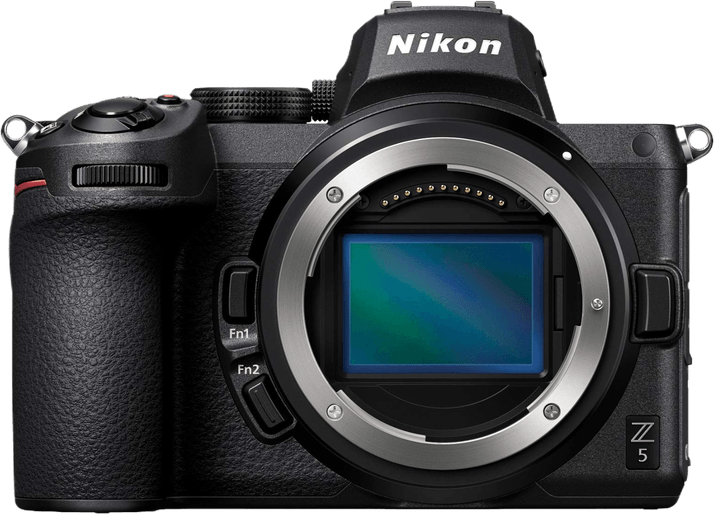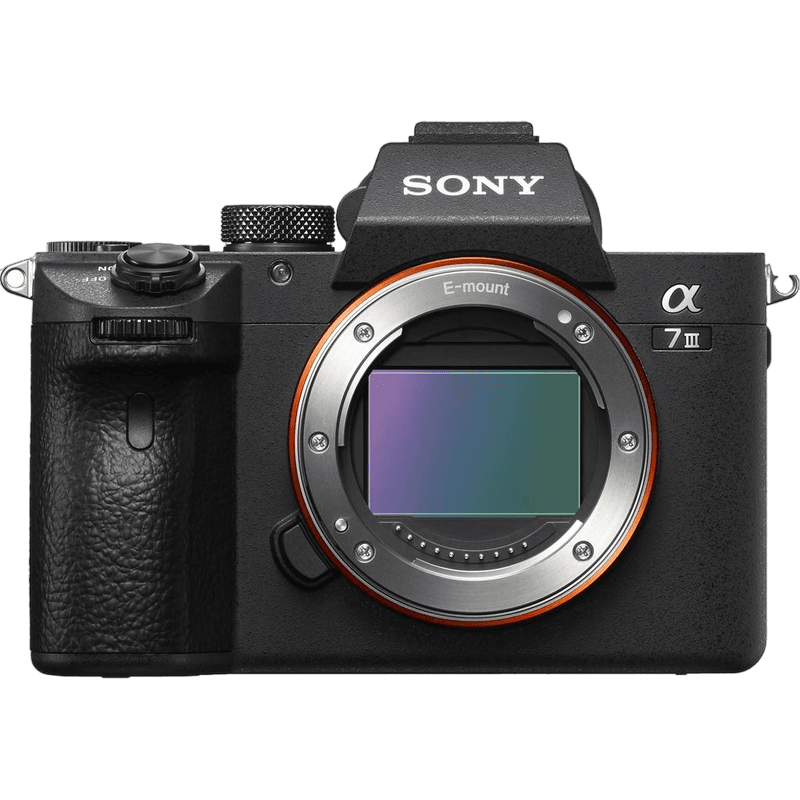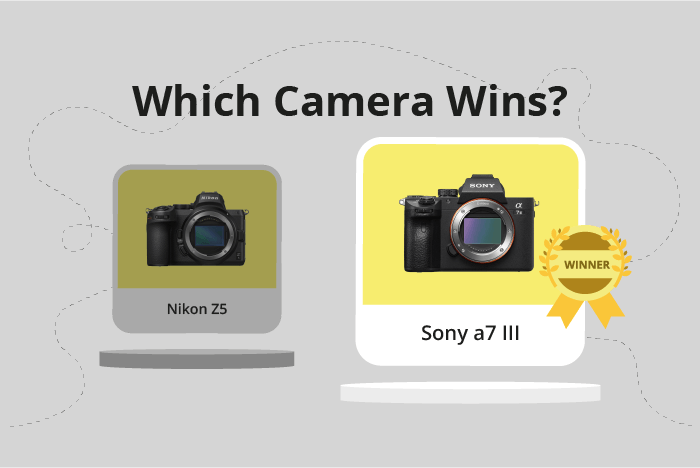Nikon Z5 vs Sony a7 III Comparison
Nikon Z5

Sony a7 III

The Sony a7 III edges out the Nikon Z5 with a score of 81 compared to the Z5’s 78/100. Both cameras are mirrorless and share similar sizes and weights, with the a7 III being slightly smaller and lighter. The Nikon Z5 was released in 2020 with a launch price of $1400, while the Sony a7 III was released in 2018 and had a launch price of $2000.
The Sony a7 III gains its higher score due to its better overall performance and features. However, the Nikon Z5 has the advantage of a lower price tag, making it more accessible for consumers on a budget.
Considering these factors, the Sony a7 III is the better choice for those seeking top-notch performance, while the Nikon Z5 offers a more affordable option without sacrificing too much in terms of quality.
Nikon Z5 vs Sony a7 III Overview and Optics
The Nikon Z5 and Sony a7 III both scored 81/100 in optics, indicating a tie in this aspect. Both cameras share several common specifications, including 24 and 24.2 megapixels, CMOS sensor type, full-frame sensor size, and image stabilization. Additionally, both cameras feature their respective lens mounts, with the Nikon Z5 using the Nikon Z mount, and the Sony a7 III using the Sony FE mount.
The Nikon Z5 has a slight advantage with its Expeed 6 processor and a DXOMARK score of 97 for its sensor, providing better image quality and processing capabilities. The higher DXOMARK score means that the Nikon Z5’s sensor performs slightly better than the Sony a7 III’s sensor, with a score of 96. The Nikon Z5 also has a shooting speed of 4.5, which is suitable for most photography needs.
On the other hand, the Sony a7 III has a faster shooting speed of 10, making it more suitable for capturing fast-moving subjects and action photography. Its Bionz X processor, although not as advanced as the Nikon Z5’s Expeed 6, still provides reliable image processing and performance.
Both cameras excel in their respective areas, with the Nikon Z5 having a slight edge in image quality and processing, and the Sony a7 III being better for action photography due to its faster shooting speed. Depending on the individual photographer’s needs and preferences, either camera can be a suitable choice for their photography requirements.
Nikon Z5 vs Sony a7 III Video Performance
The Nikon Z5 emerges as the winner in the video capabilities comparison, scoring 83 out of 100 points, while the Sony a7 III scores 70 points. Both cameras share some common video specifications, such as a maximum video resolution of 4K and maximum video dimensions of 3840 x 2160.
The Nikon Z5 outperforms the Sony a7 III in several aspects. Firstly, it has a higher maximum video frame rate of 60fps, compared to the Sony a7 III’s 30fps. This allows for smoother and more detailed video capture, particularly when filming fast-moving subjects or scenes. Both cameras have a built-in time-lapse functionality, which enables the creation of stunning time-lapse videos without the need for additional software or equipment.
Although the Sony a7 III falls short in some areas, it still offers reliable video capabilities. Its 4K video resolution and 3840 x 2160 video dimensions ensure high-quality video capture.
The Sony a7 III remains a viable option for those who prioritize 4K video resolution and do not require the additional features offered by the Nikon Z5.
Nikon Z5 vs Sony a7 III Features and Benefits
The Sony a7 III surpasses the Nikon Z5 in features with a score of 81/100, while the Nikon Z5 scores 72/100. Both cameras share several specifications, such as a touchscreen, flip screen, WIFI, and Bluetooth capabilities. However, neither camera has GPS functionality.
The Sony a7 III stands out with a higher feature score. Despite having a slightly smaller screen size at 3 inches compared to the Nikon Z5’s 3.2 inches, the Sony a7 III compensates with a higher screen resolution of 921,600 dots, while the Nikon Z5 has 1,040,000 dots. This difference in resolution contributes to the Sony a7 III’s better image quality, making it a more desirable camera for photographers who prioritize sharpness and clarity in their images.
On the other hand, the Nikon Z5 offers some advantages despite its lower feature score. Its larger screen size provides a better viewing experience, which may be beneficial for photographers who prefer a more spacious and comfortable display when composing and reviewing images. The Nikon Z5’s slightly lower screen resolution does not significantly impact the overall image quality, making it still suitable for most photography needs.
Considering the features of both cameras, the Sony a7 III emerges as the superior option due to its higher score and better screen resolution. However, the Nikon Z5 remains a viable choice for those who prioritize a larger screen size. Both cameras provide excellent features, such as touchscreen, flip screen, WIFI, and Bluetooth capabilities, making them suitable for various photography styles and preferences.
Nikon Z5 vs Sony a7 III Storage and Battery
Both cameras share similarities, such as having two memory card slots and accepting SD/SDHC/SDXC cards. However, the Z5 has an edge with its compatibility with UHS-II cards, allowing for faster read and write speeds.
In terms of battery life, the Sony a7 III outperforms the Nikon Z5, offering 750 shots per charge, while the Z5 provides 470 shots. Both cameras posess USB charging, making it more convenient for on-the-go charging.
Alternatives to the Nikon Z5 and Sony a7 III
Are you still undecided about which camera is right for you? Have a look at these popular comparisons that feature the Nikon Z5 or the Sony a7 III:

